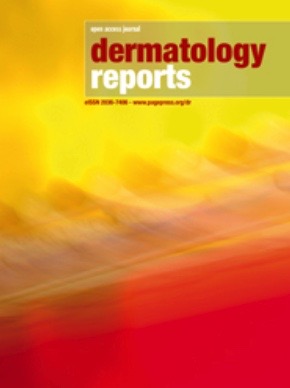Anamnestic, clinical, and dermoscopic predictors of malignancy in melanocytic lesions with peripheral globules: a retrospective study
All claims expressed in this article are solely those of the authors and do not necessarily represent those of their affiliated organizations, or those of the publisher, the editors and the reviewers. Any product that may be evaluated in this article or claim that may be made by its manufacturer is not guaranteed or endorsed by the publisher.
Authors
Melanocytic lesions with peripheral globules (MLPGs) usually represent lesions in an active growth phase and should be carefully evaluated in adults and the elderly, since melanoma can rarely present with this pattern. The primary aim of this study was to identify anamnestic, clinical, and dermoscopic features associated with malignancy (histologic outcome of melanoma) in MLPGs. The secondary aim was to describe the frequency of these features. We conducted a retrospective cross-sectional observational study, evaluating anamnestic, clinical, and dermoscopic features of MLPGs excised at the Dermatology Clinic of Trieste, Italy (January 2019-June 2023). The association between each variable and the histologic outcome (nevus or melanoma) was assessed using Fisher’s exact test. Differences in age and lesion diameter distribution between nevi and melanomas were analyzed using Student’s t-test for independent variables. Several lesion characteristics were associated with malignancy, including a personal history of melanoma (p=0.0069), localization on the lower limbs (p=0.0215), and lesion diameter ≥6 mm (p=0.0025). Several dermoscopic features were also associated with malignancy, namely non-circumferential peripheral globules (p=0.0406), regression (p=0.0042), evident vascular pattern/pink areas (p=0.0007), inverse network (p=0.0243), and asymmetric central globules (p=0.0057). Additionally, the comparison between melanoma and nevi groups confirmed that malignant lesions were characterized by a higher mean age at diagnosis (p=0.0237) and a larger mean diameter (p=0.000112). This study provides practical guidance for the management of MLPGs, highlighting that several anamnestic, clinical, and dermoscopic features are suggestive of malignancy.
How to Cite

This work is licensed under a Creative Commons Attribution-NonCommercial 4.0 International License.








